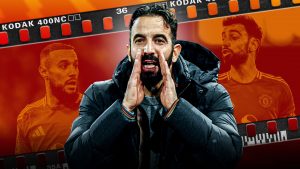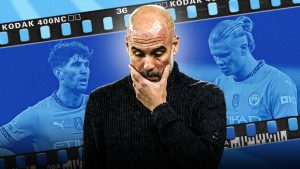Cowboys’ pass rush bullied Giants; Here’s how Micah Parsons & Co. did it


By Geoff Schwartz
FOX Sports NFL Analyst
The Dallas Cowboys‘ defense is a problem.
The group has allowed only three offensive touchdowns through three weeks. It’s terrorizing pass-protection units, with 65 total pressures through the first three games. That includes 13 sacks, with Defensive Player of the Year candidate Micah Parsons having four and defensive end DeMarcus Lawrence adding three. Those two pass-rushers are the engine of Dallas’ defensive success.
That pass rush overwhelmed the Giants‘ blocking unit Monday night.
According to ESPN Stats and Info, Giants quarterback Daniel Jones was pressured on 24 dropbacks. Yikes. New York’s offensive line is now allowing pressure on 40% of Jones’ dropback pass attempts, second only to the pressure rate on Bears QB Justin Fields.
Even with Parsons sick and the Dallas pass rush facing a subpar pass-blocking unit, the Cowboys did some impressive things to generate those pressures.
Related: NFL power rankings: Dolphins take top spot, Cowboys rise
Dallas’ pass rush has generated pressures all season in the same way it did Monday. The Cowboys have individual pass rushers who excel at their jobs. They also align their best pass-rushers in different positions each rep, so it’s difficult to game plan against what the pass rush might do. Lastly, Cowboys defensive coordinator Dan Quinn utilizes some funky pressures that have given blockers issues.
Let’s break down what I saw against the Giants.
Individual wins
Lawrence dominated his matchup against rookie right tackle Evan Neal. Lawrence was able to use the same pass-rush move, a cross chop, multiple times for sacks. When an offensive lineman strikes with his outside arm, the defensive player uses his opposite arm to cross over the striking arm and chop it down. As the defender removes the offensive lineman’s arm, he steps through to clear his body of the lineman. Stepping through allows the defender an angle to continue his rush to the quarterback without hesitation.
When Lawrence chops down Neal’s arm, Neal’s feet stopped, and he leaned over, putting him off-balance. This allowed Lawrence to finish toward the quarterback. Neal needs to wait to strike, allowing the defender to get closer to him for a strike. This will keep his feet moving instead of reaching to strike the defender. It’s very well-done by Lawrence, and Neal had no answer.
Micah Parsons did not sack Daniel Jones, but he was a destructive force regardless. He’s an incredibly explosive athlete with strength and flexibility to match. The highlight play of him trucking the poor right guard and finishing the rush by hitting Jones was impressive. The right tackle needs to punch Parsons as he rushes inside, so he doesn’t get a free run at the right guard.
Here’s an example of Parsons’ incredible twitch. He’s aligned outside the defensive end, and Giants left tackle Andrew Thomas takes a pass-set anticipating an outside rush. In the blink of an eye, Parsons immediately veers course to take an inside rush. Thomas tries to correct his course, but it’s ugly.
The running back needs to pick up Parsons. When he doesn’t, it allows his defender to wrap around for a hit on Jones.
Optimal alignment
What second-year defensive coordinator Quinn has done this season is make his pass-rushers interchangeable parts. Lawrence and Parsons are able to line up in different spots in each pass-rushing situation, which allows Dallas to find more favorable matchups.
Here, Parsons and Lawrence are both aligned over the offensive guards. While interior offensive linemen might see some defensive ends inside, it’s not all that common.
When the ball is snapped, both of these elite pass-rushers win almost immediately against interior linemen who aren’t as quick as their offensive tackle counterparts.
Nifty pass-rush alignments
Dallas also gives offensive linemen and the blocking unit plenty to worry about with its alignments. The Cowboys are not going to line up in a basic four-man front with two inside linebackers. They rarely align, even in an overload. Their goal is to get one-on-one matchups across the board.
Here’s an example of this, with Parsons starting off the ball. At the snap, he crosses behind one defensive tackle while the second defensive tackle wraps around Parsons. It ends up being a three-man line stunt where you have every lineman blocking one-on-one.
With their ability to create pressure while aligning statically or moving their pieces around, the Cowboys will have an advantage on pass-protecting units throughout the season.
Geoff Schwartz played eight seasons in the NFL for five different teams. He started at right tackle for the University of Oregon for three seasons and was a second-team All-Pac-12 selection his senior year. He is an NFL analyst for FOX Sports. Follow him on Twitter @GeoffSchwartz.
Get more from National Football League Follow your favorites to get information about games, news and more.






